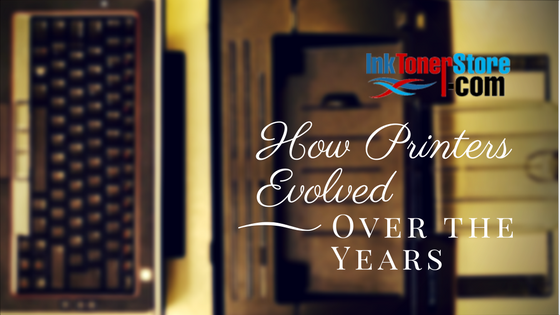Printing technology is perhaps as old as the written word. As early as 3000 BC, the Egyptians
were using rounded seals to make impressions for royal seals albeit in Heliographs. Since
then printing technology has appeared in different forms, but some trends have been
consistent; printers have become smaller, faster and able to do more than simply printing.
Printing presses
The Gutenberg printing press was the first to enable mass printing back in the 1400s. The ink
was manually applied to text blocks which made impressions on paper. The impression
blocks were manually replaced for each page. This was incredibly slow. The steam revolution
introduced steam-powered printing presses that were first automated in 1914 that could only
print a few hundred pages per hour.
Screen printing
This technique started being widely used in 1910. Screen printing enabled printing multi-
color fabrics. It uses a squeegee to spread ink over a stencil which lets ink through open
spaces on the screen. Screen printing is still widely used in the developing world.
Spirit duplication (1923)
This technique used two sheets of paper. Impressions were done on the top paper while the
bottom paper was waxed. The pressure was applied to the top paper which made impressions
on the bottom paper.
Dot matrix printer (1925)
The dot matrix printer was popular for small and home offices up to the 1990s. This printer
uses a printing head to strike an ink ribbon against the paper. The dot matrix allowed
different fonts and graphics to be produced.
Xeroxing (photocopy) (1938)
This technology was originally called Xeroxing from the company that patented it. The
technology involves sensitizing paper parts using electric static. Dye is then sprayed and
bonds on these sensitized parts. Photocopying technology is still the preferred method for
hardcopy mass duplication.
Inkjet printing (1951)
A commercial inkjet printer appeared on the market in 1951. However, inkjet printers were
able to print from PCs in the 1970s. An inkjet printer uses a nozzle to spray ink on the paper.
Improved nozzle and inks have made inkjets the preferred printers for high-quality images
including glossy photos.
Laser printing (1969)
Laser printing is preferred for printing high volumes fast. This technology uses a laser beam
to sensitize parts on a drum. These sensitized parts then attract toner and transfer it to paper.
Digital printing (1991)
This technology allows printing directly from PCs and other devices. Letters and images are
digitized, and this image used to control the way toner or ink is deposited.
3D printing
Although the first 3D printer was patented in 1981, this technology has been refined in the
2010s. A 3D printer adds layers of printable material onto a surface to make a 3D object.
What kind of printer do you own, and why do you prefer it?


